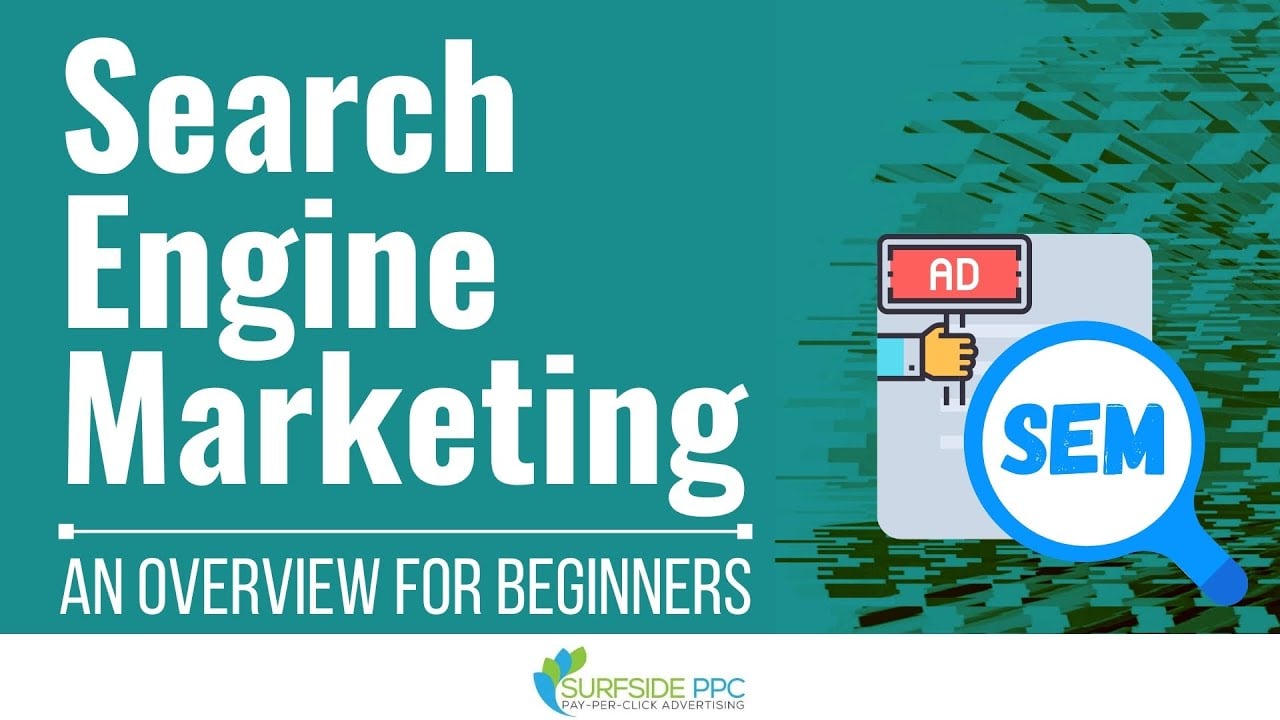In the vast digital landscape of today, businesses are constantly striving to outshine their competitors and capture the attention of potential customers. That’s where the power of Search Engine Marketing (SEM) comes into play.
SEM offers an opportunity to propel businesses to new heights through paid advertising methods. While Search Engine Optimization (SEO) focuses on earning free search results, SEM takes a different approach, putting your brand front and center in search engine results pages.
So, how can you make the most of SEM? By understanding the importance of keywords, search intent, ad relevance, and ongoing campaign optimization.
In this article, we uncover the secrets of SEM success and explore the essential tools that can help you maximize your advertising impact.
| Item | Details |
|---|---|
| Topic | Sem Google Ads: Unlocking the Secrets to Effective Online Advertising |
| Category | Ads |
| Key takeaway | In the vast digital landscape of today, businesses are constantly striving to outshine their competitors and capture the attention of potential customers. |
| Last updated | December 27, 2025 |
sem google ads
SEM Google Ads, also known as Search Engine Marketing, is a way for businesses to grow online through paid advertisements on search engine results pages. Advertisers bid on keywords that users might use when searching for products or services.
This differs from SEO, where businesses earn a free spot in search results through relevant content. Keyword research is crucial for selecting the right keywords for SEM campaigns, while excluding negative keywords is also important.
Search intent plays a role in the likelihood of a prospect taking the desired action after searching for a term. Proper account structure is essential for logical keyword grouping, and the ad auction process in Google AdWords takes into account the maximum bid and Quality Score for ad placement.
The Quality Score is based on ad relevance and can help achieve better ad positions at lower costs. Ongoing management and optimization are necessary for successful SEM campaigns, and tools like HubSpot’s Ad Tracking Software, SEMrush, Google Trends, Keywordtool.io, and SpyFu can be beneficial for SEM strategies.
Additionally, tools such as Google Autocomplete, Google Ads Keyword Planner, SpyFu, and WordStream are useful for keyword research and campaign optimization in SEM.Key Points:
- SEM Google Ads is a paid advertising method for businesses to grow online.
- Advertisers bid on keywords to appear in search engine results pages.
- Keyword research and exclusion of negative keywords are important for SEM campaigns.
- Search intent affects the likelihood of a prospect taking the desired action.
- Proper account structure and ad auction process in Google AdWords are crucial for success.
- Ongoing management and optimization, along with various tools, enhance SEM strategies.
Sources
https://blog.hubspot.com/marketing/search-engine-marketing
https://www.wordstream.com/search-engine-marketing
https://www.cyberclick.net/sem/sem-google
https://www.forbes.com/advisor/business/search-engine-marketing-sem/
Check this out:
💡 Pro Tips:
1. Implement ad extensions in your SEM campaigns to provide more information and increase click-through rates. Ad extensions include features like sitelinks, call extensions, and location extensions, which can improve the visibility and effectiveness of your ads.
2. Utilize remarketing campaigns to target users who have already interacted with your website. This allows you to stay top of mind and bring back potential customers who may have shown initial interest but did not convert.
3. Regularly review your campaign performance and make data-driven optimizations. Monitor key metrics such as click-through rates, conversion rates, and cost per acquisition, and make adjustments to your bidding strategy, ad copy, and keywords as needed to improve results.
4. Test different ad variations to find the most effective messaging and design. A/B test different headlines, descriptions, call-to-actions, and even visuals to see which combination resonates best with your target audience.
5. Leverage audience targeting options to reach specific groups of people who are more likely to be interested in your products or services. Utilize demographic targeting, affinity audiences, and in-market audiences to narrow down your audience and focus your advertising efforts on those who are most likely to convert.
What Is Sem?
Search Engine Marketing (SEM) refers to a powerful online advertising strategy that involves using paid advertisements on search engine results pages (SERPs) to grow a business. This form of marketing allows advertisers to bid on keywords that users might use when searching for products or services.
When users enter these keywords into a search engine, the ads appear at the top or bottom of the SERP, increasing the visibility of the business and driving targeted traffic to the website.
SEM provides businesses with an effective means of reaching their target audience and increasing brand awareness. By targeting specific keywords, businesses can ensure that their ads are displayed to users who are actively searching for products or services relevant to their industry.
This highly targeted approach helps drive qualified traffic to the website, increasing the likelihood of conversions and ultimately boosting the business’s online success.
In SEM, advertisers pay for clicks on their ads, commonly referred to as pay-per-click (PPC) advertising. This means that businesses only pay when someone clicks on their ad, making it a cost-effective marketing strategy with a measurable return on investment (ROI).
By continuously optimizing and improving SEM campaigns, businesses can further enhance their online presence and drive even better results.
The Difference Between Sem And Seo
It is essential to distinguish between SEM and Search Engine Optimization (SEO) to fully understand their respective roles in online marketing. While SEM focuses on paid advertising on search engine results pages, SEO aims to earn a free spot in the organic search results through relevant content and website optimization.
SEM provides businesses with a way to quickly and effectively appear in search results by bidding on specific keywords. This immediate visibility is particularly useful for businesses looking to launch new campaigns, promote specific products or services, or target a specific audience.
In contrast, SEO is a more long-term strategy that involves optimizing website content, improving site structure, and building authoritative backlinks to increase organic rankings.
Both SEM and SEO play essential roles in driving traffic to a website. While SEM offers immediate visibility, SEO provides long-term sustainability.
A balanced approach that incorporates both strategies can optimize the overall online presence of a business and maximize its reach to potential customers.
The Importance Of Keyword Research
Keyword research is a crucial step in SEM campaigns as it involves identifying and selecting the right keywords to target. Here’s why keyword research is so vital:
By selecting less competitive keywords, businesses can optimize their budget while still reaching their target audience.
By investing time and effort into comprehensive keyword research, businesses can optimize their SEM campaigns, improve ad targeting, and ensure a higher ROI.
Excluding Negative Keywords
In order to maximize the effectiveness of SEM campaigns, it is crucial to exclude negative keywords. Negative keywords are terms or phrases that are irrelevant to the products or services offered by a business.
By excluding these keywords, businesses can prevent their ads from appearing in front of users who are unlikely to convert.
Fresh look at global CPC and CPM benchmarks.
Excluding negative keywords helps improve campaign performance in several ways:
By excluding negative keywords, businesses can ensure that their ads are displayed to users who are genuinely interested in their offerings, leading to higher CTRs.
Proper management of negative keywords is an integral part of optimizing SEM campaigns. By regularly reviewing and updating the list of negative keywords, businesses can continuously refine their campaigns and improve their overall performance.
Understanding Search Intent
Search intent refers to the underlying purpose or motivation behind a user’s search query. Understanding search intent is essential for SEM campaigns as it allows businesses to align their ads with the user’s needs and intentions.
By delivering ads that closely match the user’s search intent, businesses can significantly improve the chances of conversions and successful campaign outcomes.
There are four common types of search intent:
Users may be seeking knowledge, research, or guidance on a particular topic.
Users are researching options and comparing different products or services before making a decision.
By analyzing and understanding the search intent behind specific keywords, businesses can tailor their ads to meet the needs and expectations of the users. This level of personalization not only increases relevance but also enhances the overall user experience, resulting in improved campaign performance and higher conversion rates.
The Role Of Account Structure
Proper account structure is crucial in SEM campaigns to ensure logical keyword grouping, efficient campaign management, and optimal ad performance. Here are some key factors to consider when organizing a Google Ads account:
This allows for greater targeting and customization, ensuring that the ads resonate with the users’ search queries.
Ad copy should highlight the unique selling points, benefits, and calls to action that drive users to take the desired action.
By properly structuring the Google Ads account and campaigns, businesses can streamline management, improve relevancy, and optimize ad performance, leading to better overall campaign results.
The Ad Auction Process On Google Adwords
The ad auction process on Google AdWords determines the placement and visibility of advertisements on SERPs. When a user enters a search query, Google’s ad auction system calculates the relevance and quality of ads competing for that keyword and decides which ads to display and in what order.
Here’s an overview of the ad auction process:
It takes into account factors such as ad relevance, landing page experience, and historical performance to assign a score to each keyword.
Advertisers with higher Ad Rank are more likely to secure better ad positions.
It’s important to note that winning the ad auction does not solely depend on having the highest bid. The Quality Score plays a significant role in determining ad positions and can often enable advertisers to achieve better ad placements at lower costs.
Maximizing Ad Performance With Quality Score
The Quality Score is a crucial factor in SEM campaigns as it directly influences ad performance and the overall success of the campaign. Here’s how a high Quality Score can help maximize ad performance:
By delivering relevant and compelling ads, businesses can capture the attention of users and entice them to click on the ad.
To improve Quality Score, businesses should focus on ad relevance, keyword selection, landing page optimization, and providing a positive user experience. Regular monitoring and optimization of Quality Score can significantly enhance ad performance and improve campaign outcomes.
In conclusion, SEM using Google Ads is a powerful tool for businesses looking to grow their online presence and reach a wider audience. By understanding the intricacies of SEM, conducting effective keyword research, optimizing campaigns, and utilizing useful tools, businesses can unlock the secrets to effective online advertising and drive impressive results.
Native Ad Network • Self-Serve DSP Platform • Performance Marketing Tips • Buy Traffic • Advertising Platform for Marketers











